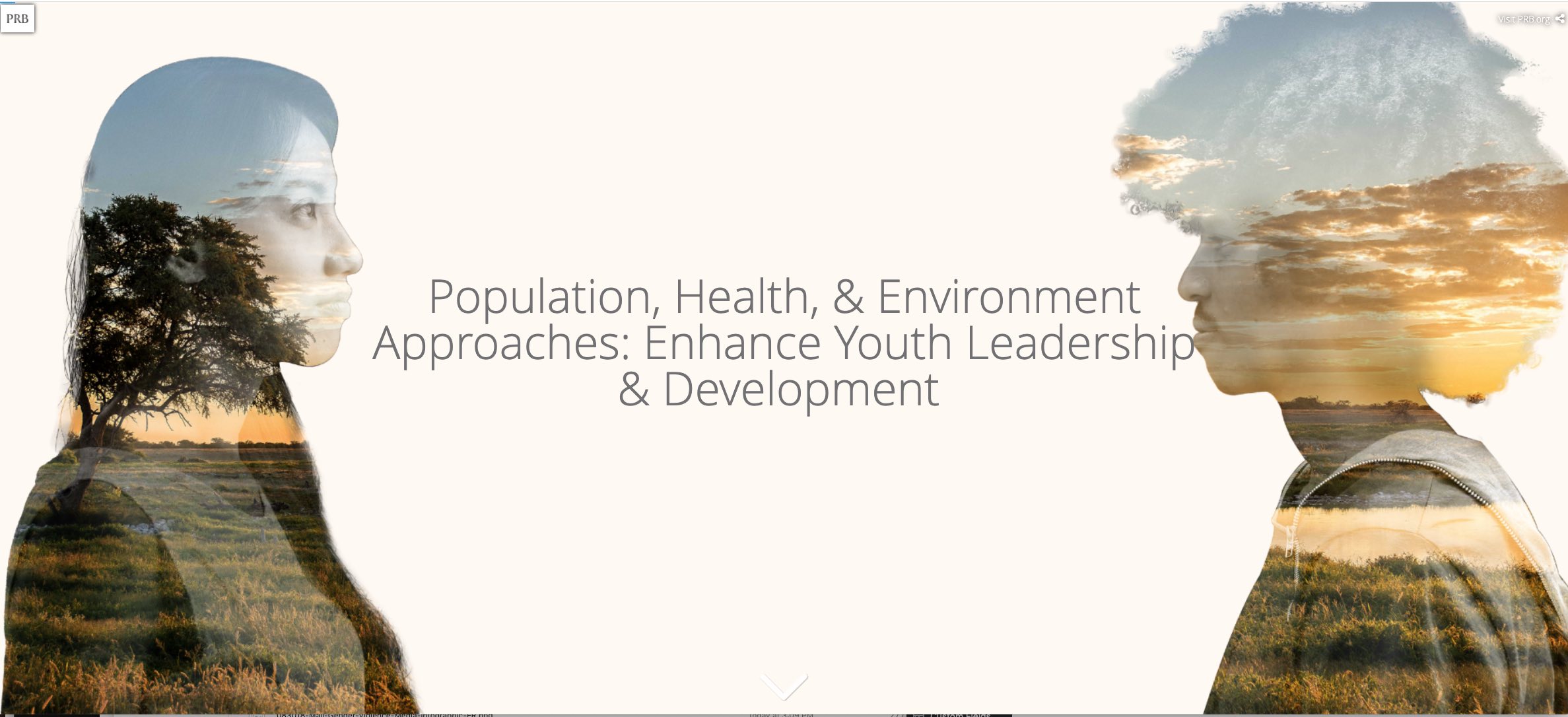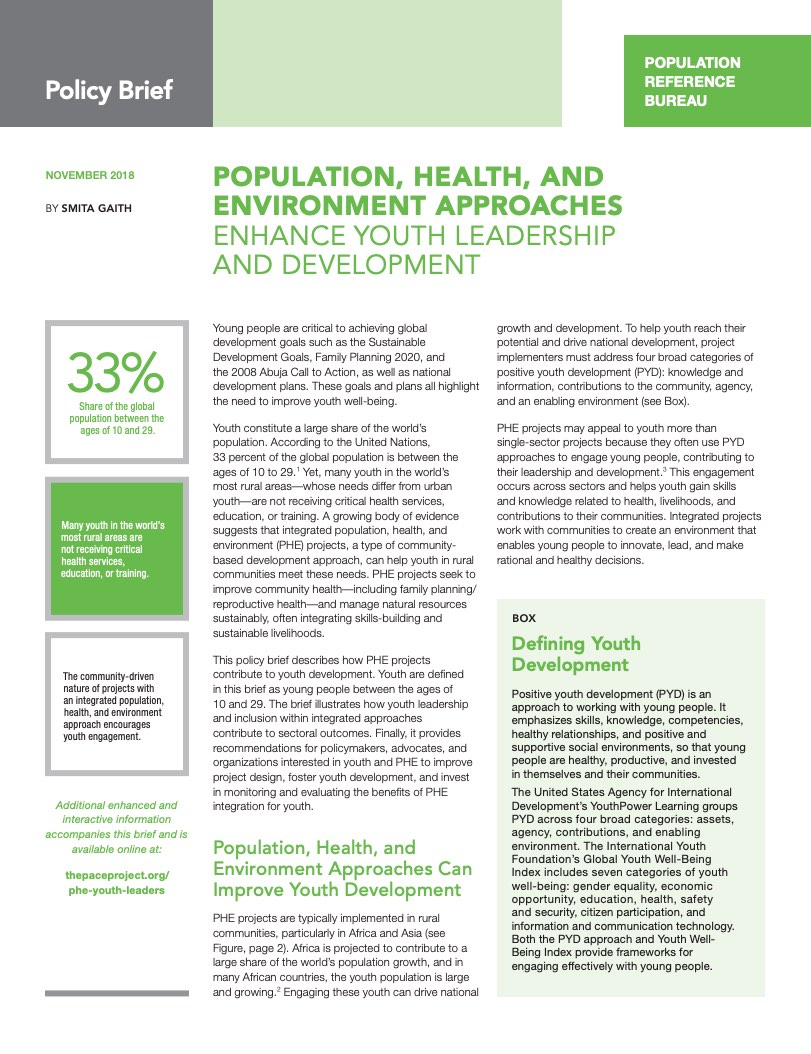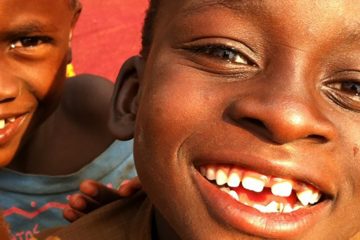
Youth constitute a large share of the world’s population. According to the United Nations, 33 percent of the global population is between the ages of 10 to 29.1 Yet, many youth in the world’s most rural areas—whose needs differ from urban youth—are not receiving critical health services, education, or training.
A growing body of evidence suggests that integrated population, health, and environment (PHE) projects, a type of community-based development approach, can help youth in rural communities meet these needs. PHE projects seek to improve community health—including family planning/reproductive health—and manage natural resources sustainably, often integrating skills-building and sustainable livelihoods.
This policy brief and web feature describe how PHE projects contribute to youth development. Youth are defined in these products as young people between the ages of 10 and 29. The brief and web feature illustrate how youth leadership and inclusion within integrated approaches contribute to sectoral outcomes, and the web feature includes two case studies and videos that explore these outcomes. Finally, the products provide recommendations for policymakers, advocates, and organizations interested in youth and PHE to improve project design, foster youth development, and invest in monitoring and evaluating the benefits of PHE integration for youth.
PACE Project and YouthPower Learning co-hosted webinar
YPL Webinar
Following the publication of the brief and web feature, the PACE Project and YouthPower Learning co-hosted a webinar discussing the overlaps between PHE and positive youth development (PYD) as holistic approaches. Modest Kinawa, of the Health of People and Environment-Lake Victoria Basin (HoPE-LVB) project also showcased the design of the HOPE-LVB project and discussed specific PHE interventions that embraced the PYD framework.

 ">
"> ">
">

